Chrysler Brand 100 Year Celebration Part 2
Last time, we covered Walter P. Chrysler himself and Chrysler cars all through the early and mid-1950s.
This Part 2 celebration of 100 years of Chrysler covers the years that started with torsion bar front suspension (1957) all the way through the 1970 model year, where the Hurst version of the Chrysler 300 debuted. When one considers all the media attention the famous Chrysler Turbine attracted, the numerous body styling changes that took place in the 1960s model years, the engine size growing to 440 cubic inches, plus all the various up-level Chrysler 300 models, there’s a lot to cover. All this makes for a story about a brand that delivered a wide variety of quality luxury automobiles!
LARGE FINS!
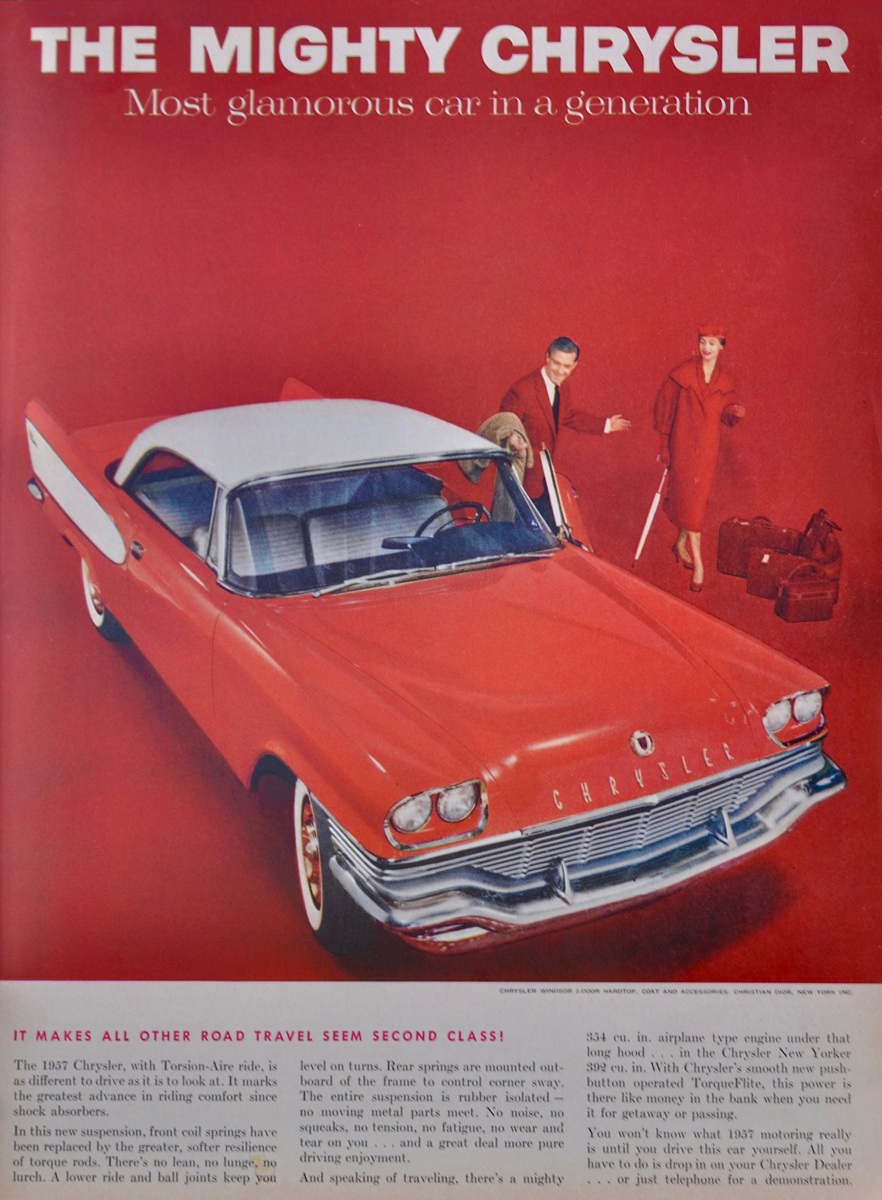
The Torsion-Aire: ride offers “no lean, no lunge and no lurch” is what the Chrysler advertisements stated about the all-new 1957 models. 354 HEMI® engines were part of the package, as were a huge set of rear “stabilizing” fins that were said to help stabilize the car under cross-winds. The long, sweeping fins were a favorite of Chrysler designer Virgil Exner.
300C
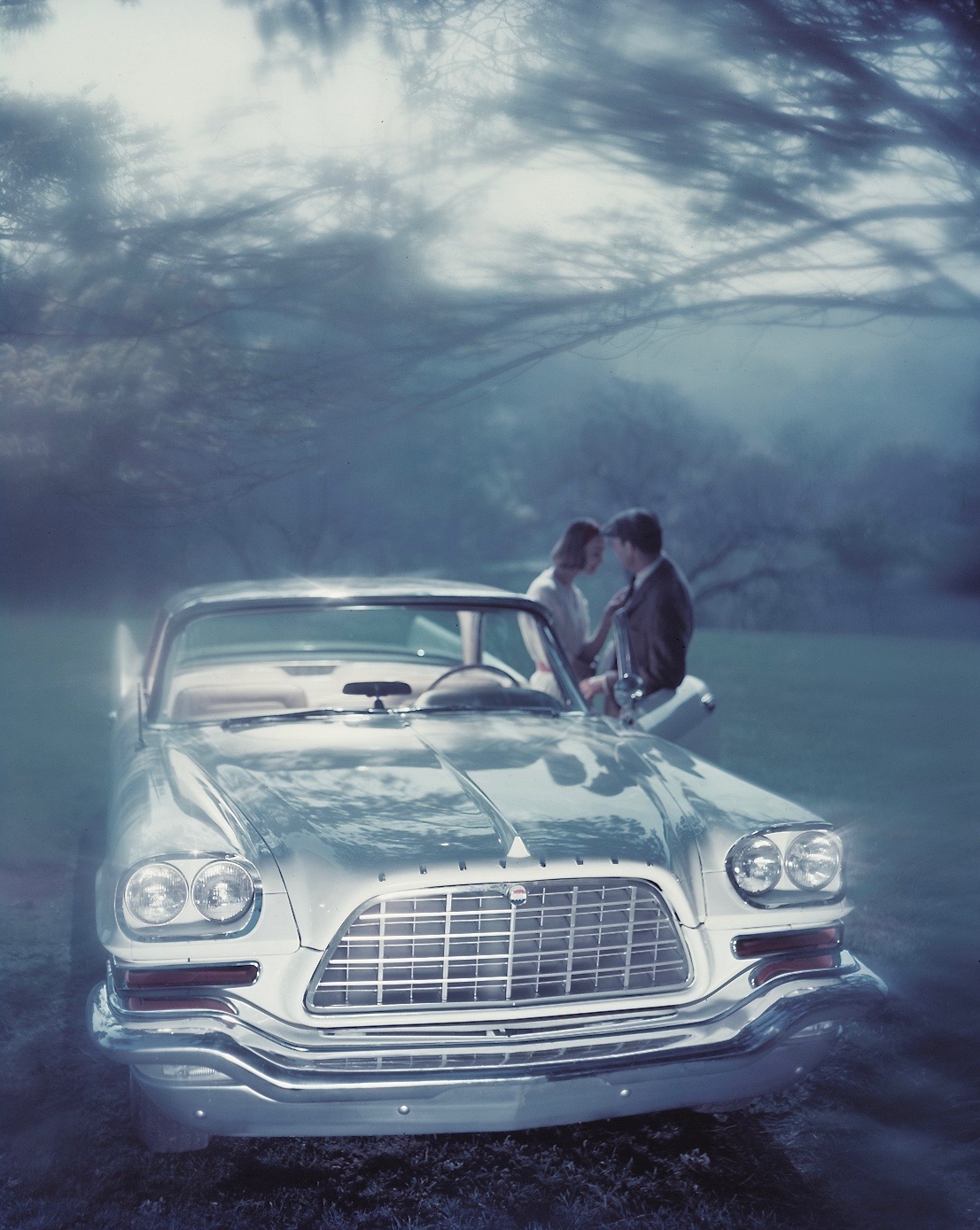
For high-performance customers, the 1957 Chrysler 300C was the hot ticket! With 392-cid HEMI engine power, using twin four-barrel carburetors, the car set a record at the Chrysler Proving Grounds in Chelsea, MI, with a run of 145.7 mph. With the optional speed package, the engine output was rated at 390 horsepower.
300D
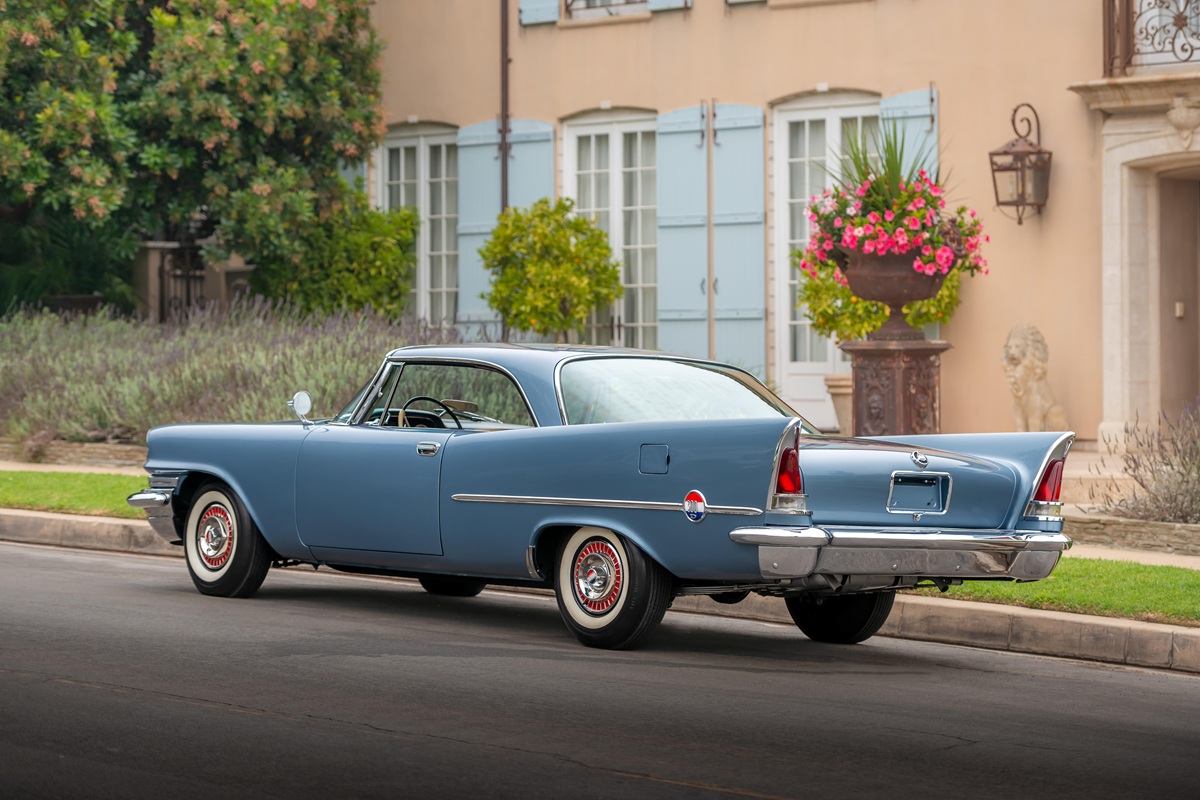
1958 300 Letter Cars were known as 300D and had slightly reduced sized tail lights, and carried largely as the year prior. All 1957 and ’58 Letter Cars are highly sought after even today as they are the last of the Chrysler “Firepower” HEMI engine-equipped high-performance cars from Chrysler.
WINDSOR MODEL FOR ’58
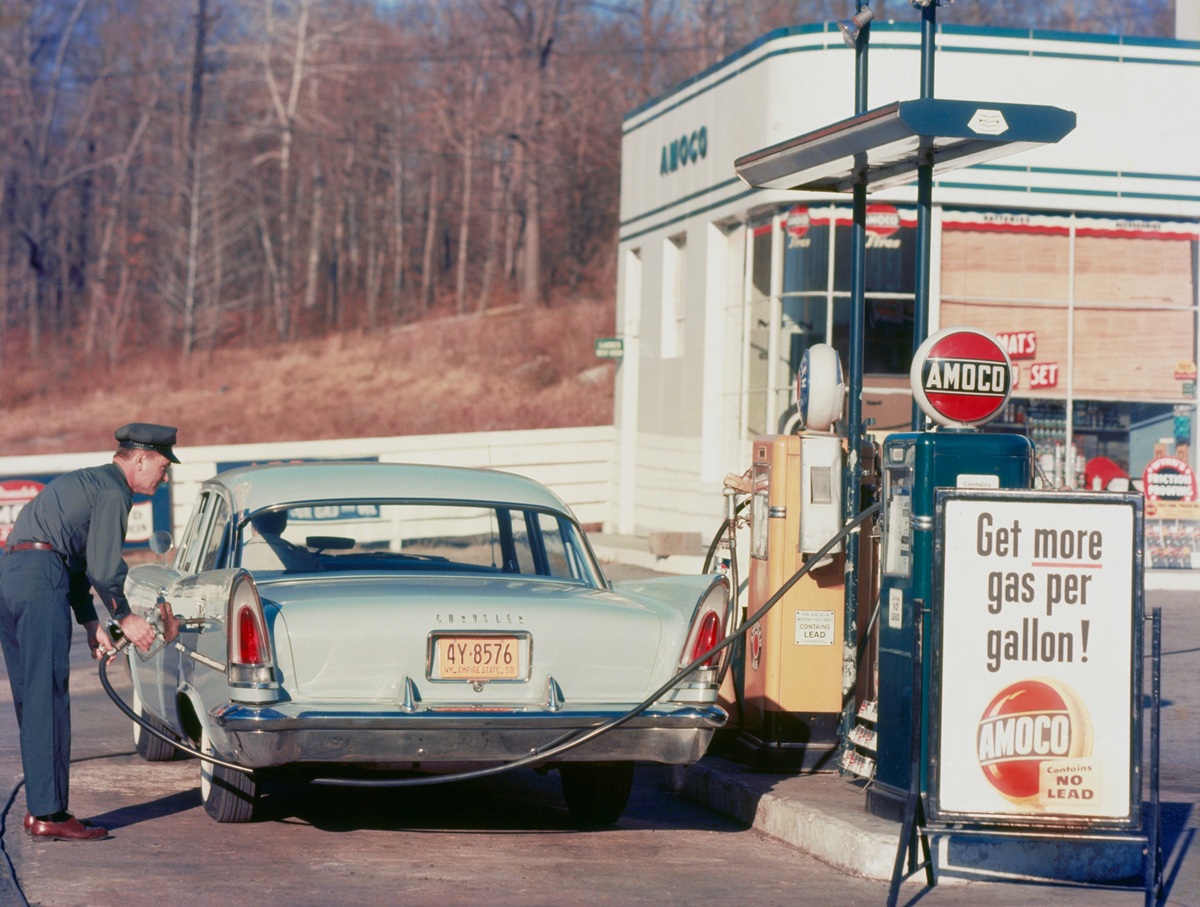
Even a lowly Windsor 4-door sedan was a very stylish ride in ’58, and ran the slightly smaller 354-cid HEMI engine.
FASHIONABLE 1959 CHRYSLERS
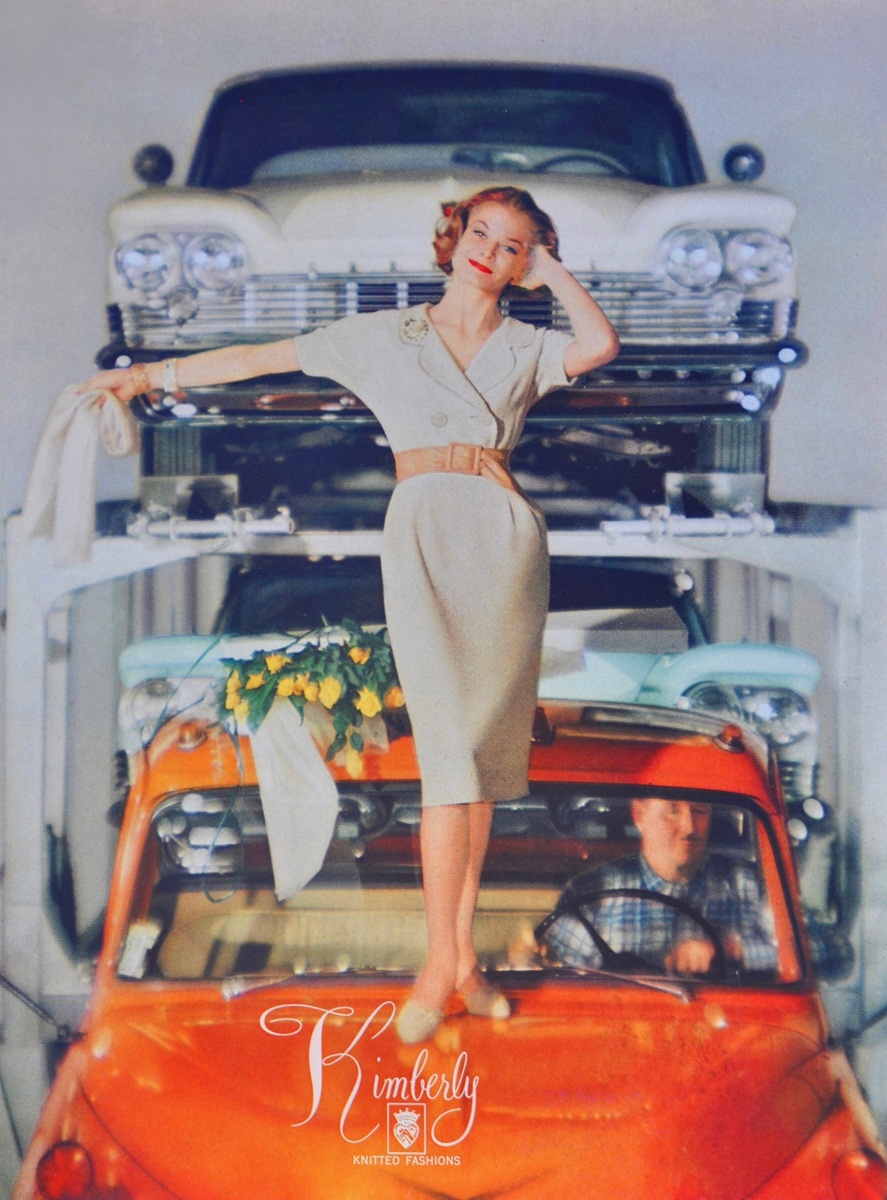
The marketing folks at Chrysler were creative with this advertising campaign! Kimberly Knitted Fashions ran color ads in women’s fashion magazines featuring a new Dodge hauler filled with brand-new Chrysler cars, adding a certain amount of glamour to the brand!
CONVERTIBLES GALORE
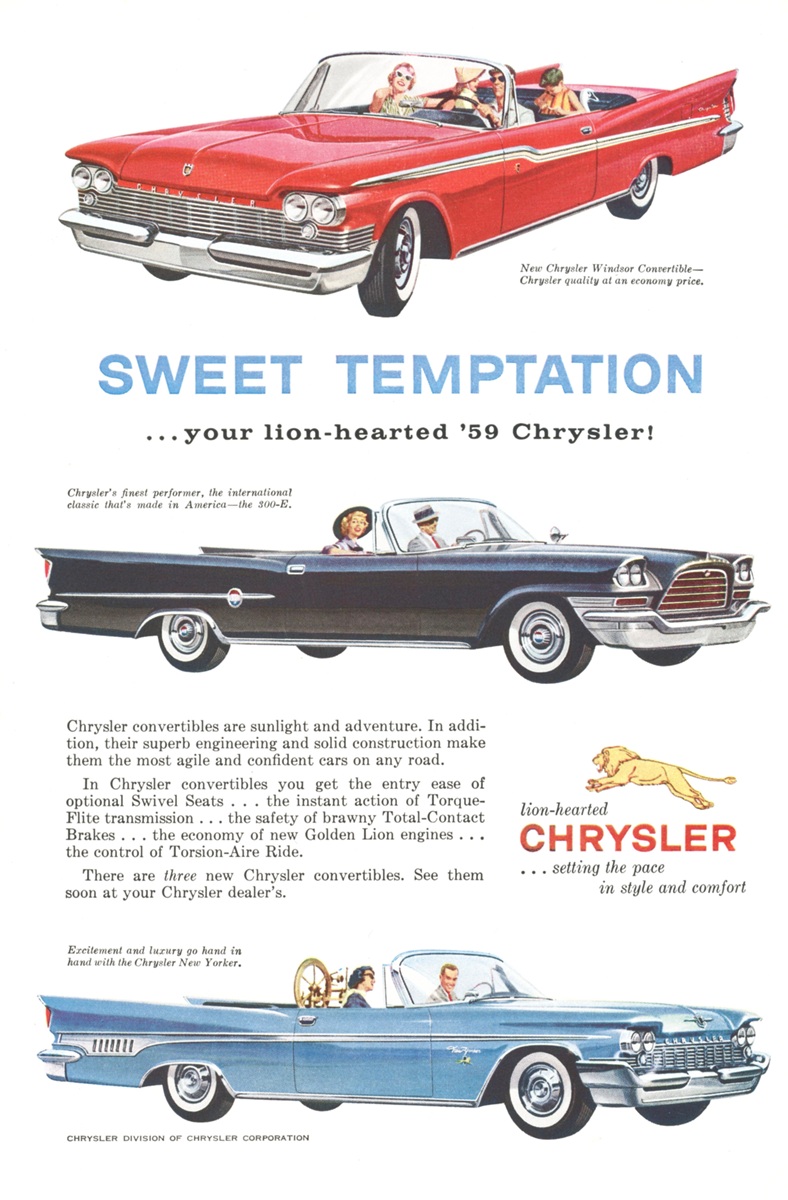
Three different 1959 Chrysler convertibles were highlighted in this full-page color ad: Windsor (top), 300E (middle), New Yorker (bottom), all available with swivel seats and standard with the TorqueFlite automatic transmission (optional on Windsor).
300E
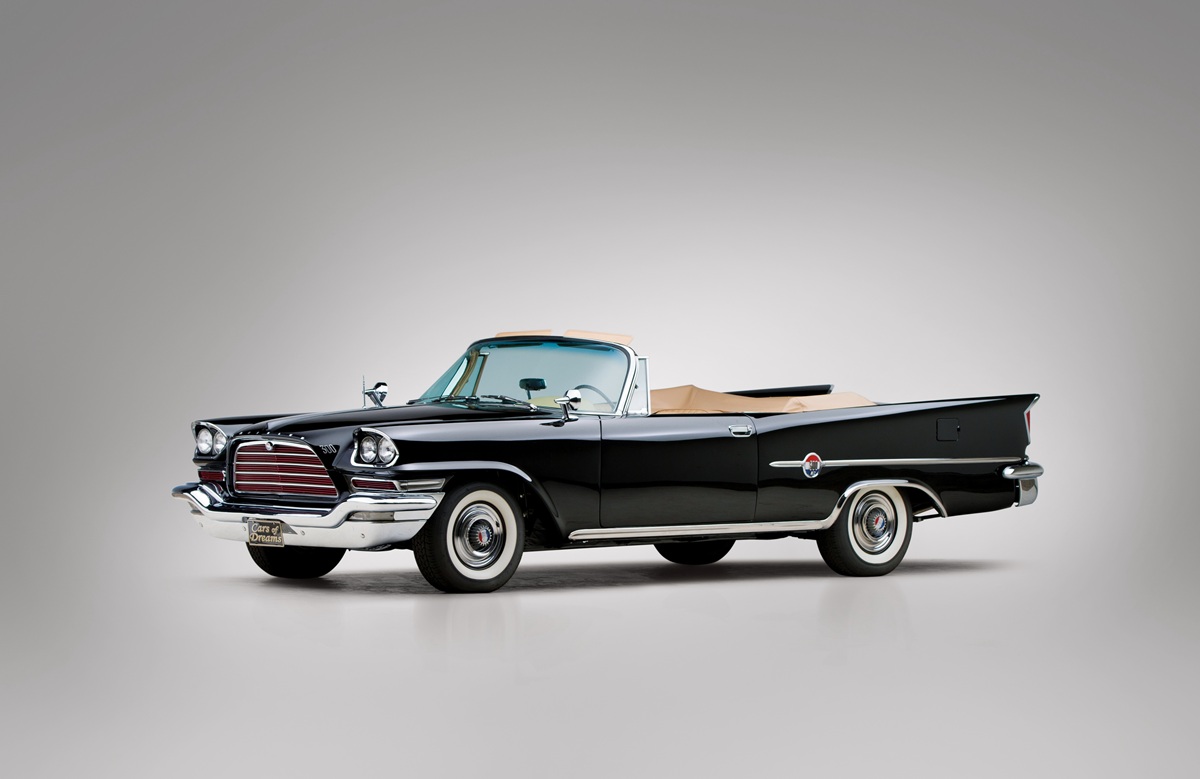

1959 saw the demise of the HEMI engine availability and it was replaced with a 413-cid wedge RB family engine, with twin four-barrel carbs and horsepower was listed at 380. 1959 marked the last year that these cars ran a full frame, as unitized body design came for the 1960 model year.
BIG WAGON
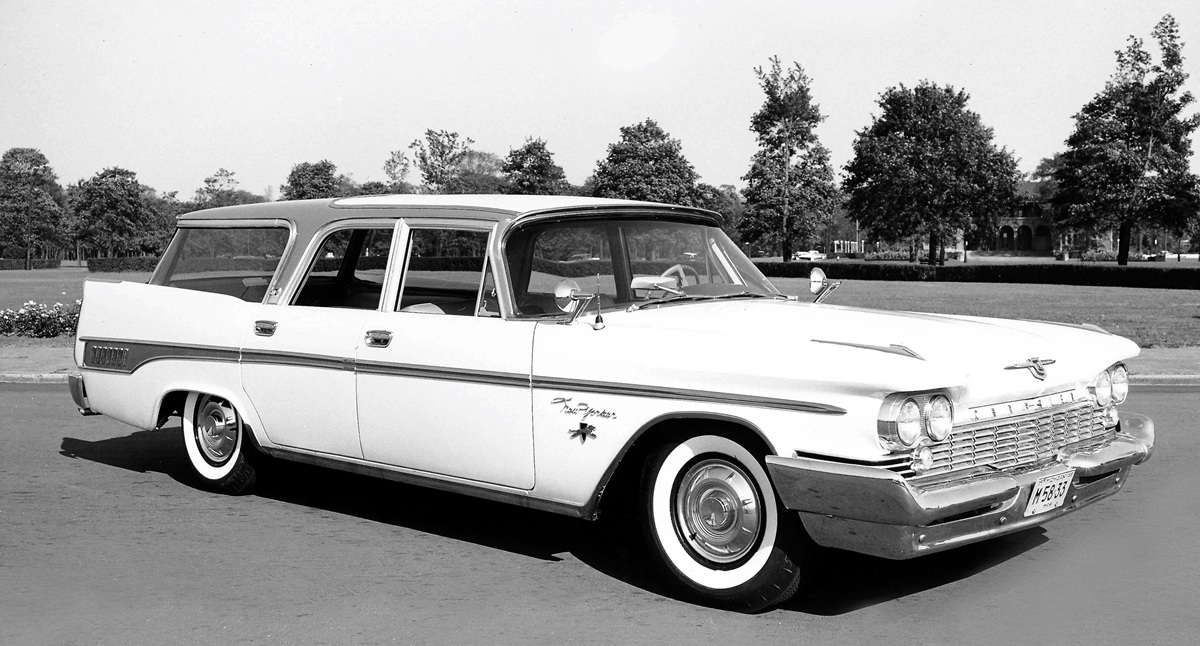
1959 Chrysler New Yorker station wagon came in both 6- and 9-passenger versions, and the 9-passenger models had the extra seat facing to the rearmost of the interior. They were big cars and plenty of room to haul the entire family!
BOLD NEW STYLING FOR 1960
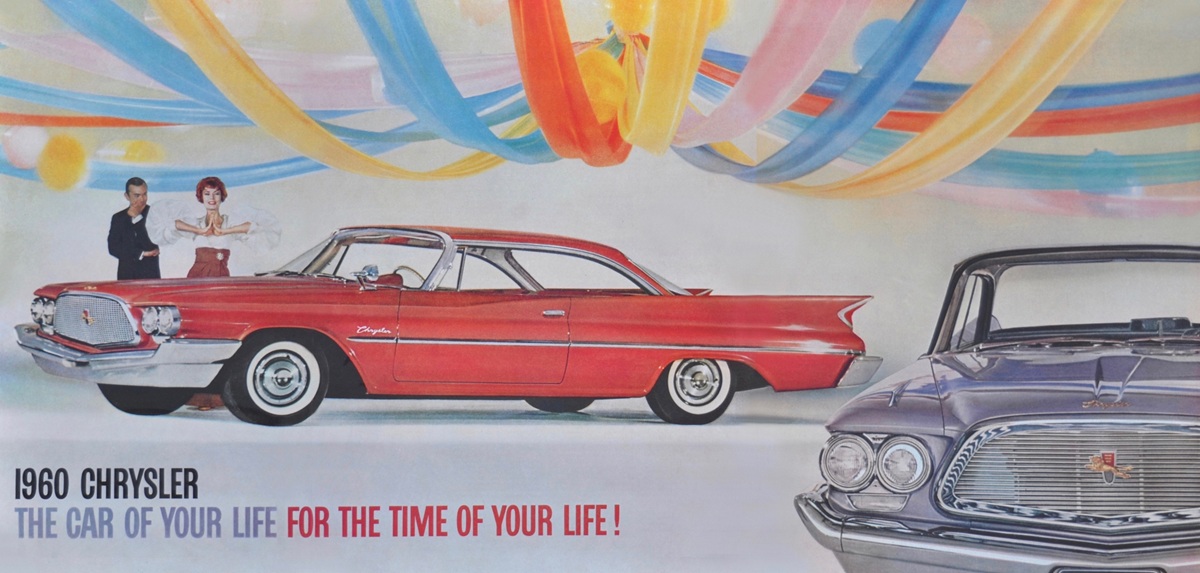
All-new body styling came for 1960 model year, complete with 300 type grille for all models. Unibody was new for this year and the use of large tail fins continued on.
LONG RAM 2X4
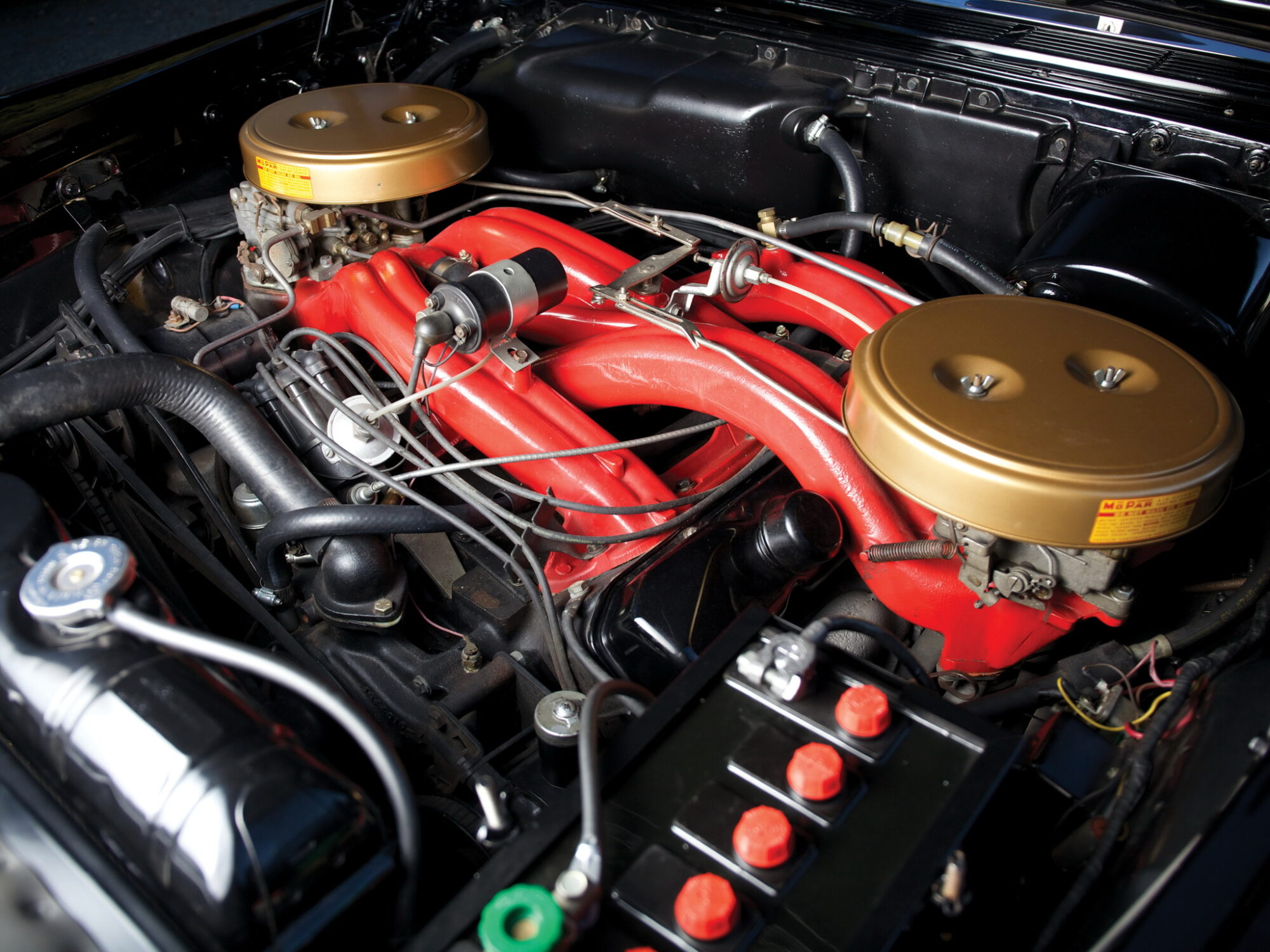
The engineers at Chrysler really came up with a wild induction for the buyers of 300F cars, a 413 with “long ram” criss-crossed 30-inch intake runners with dual four-barrel carburetors, good for 400 horsepower with the optional solid lifters.
1961 300 “G” CHRYSLER LETTER CAR
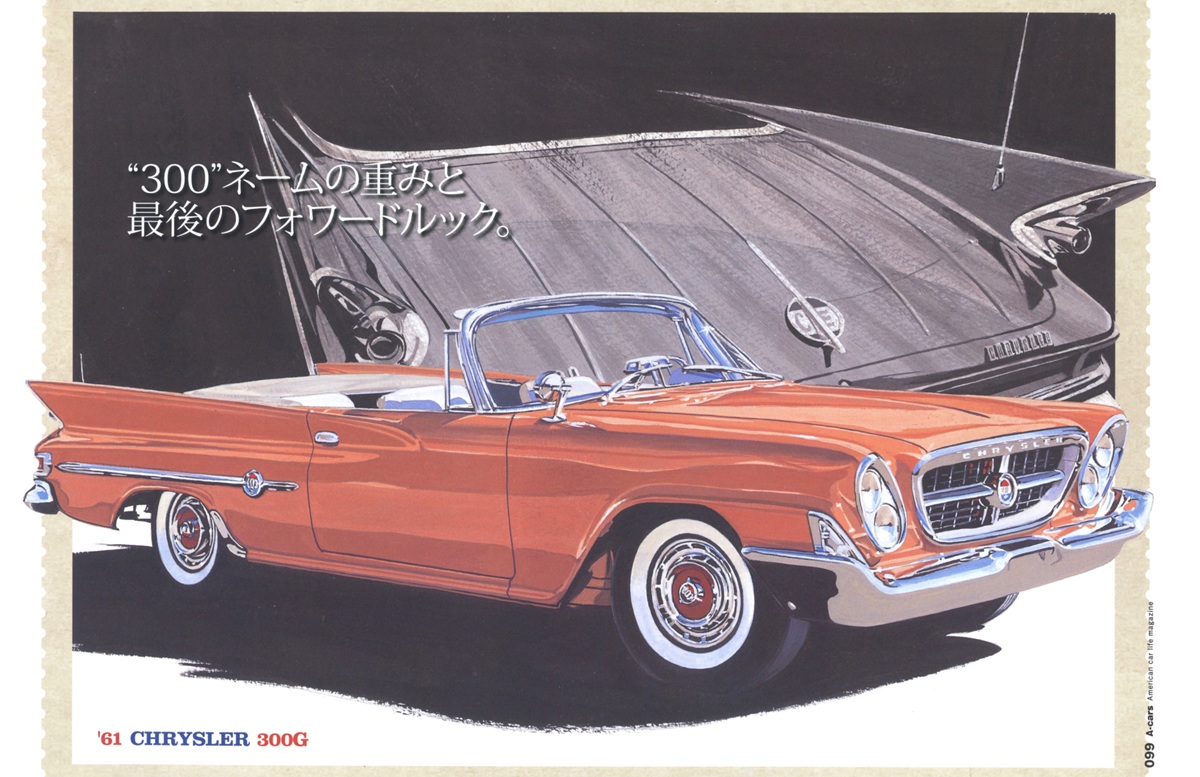
As in the past, the Chrysler 300 represented a beautiful combination of brute power and excellent styling design, as seen here with the “300G” for 1961. Power came from the trusty 413-cid RB engine series and still featured the dual four-barrel long cross ram intake.
1962 300 “H” CHRYSLER LETTER CAR
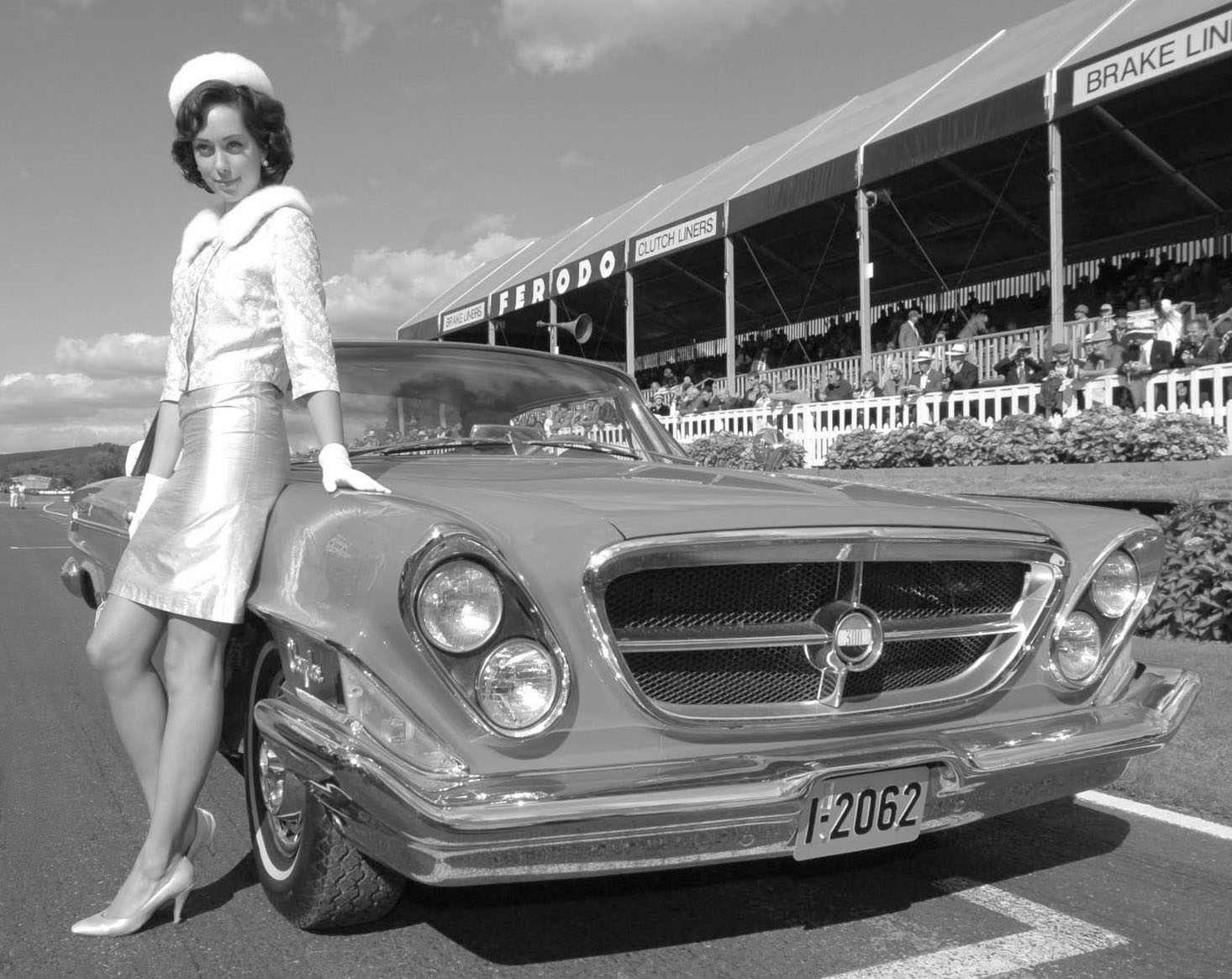
While the front styling remained the same as the prior year, for 1962 the Chrysler 300 “H” and the full line of Chryslers switched to the 1961 Dodge Polara body shells, providing a fresh look by borrowing from another division. Standard engine on the 300 H was the 413 rated at 380 horsepower with 11.0:1 compression, and twin inline four-barrels.
KEY DESIGN

The key that was used for Chrysler vehicles starting in 1962 was a design from Robert Stanley, and was intended to be instantly recognizable as a universal way to represent all Chrysler Corporation vehicles. It featured the Chrysler Pentastar logo and inserted into the ignition switch upside-down. Anyone who owned a vintage Mopar® knows this shape!
NEW STYLING FOR ’63
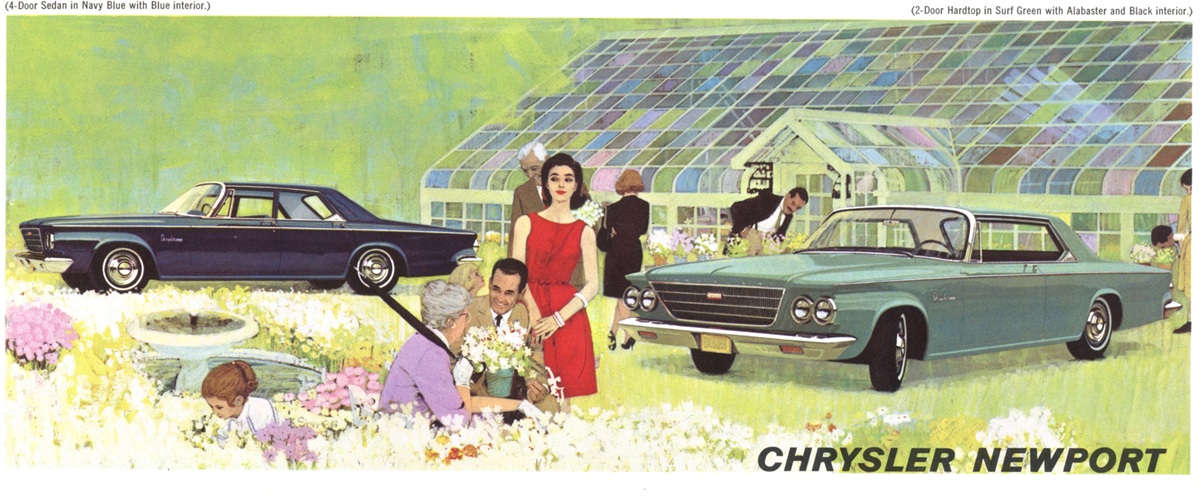
Totally redesigned bodies came for 1963, and devoid of chrome for the most part and no more fins. The pictured Newport artwork represented the least-expensive models, and the 300 series now had a 383-cid B engine as standard equipment. The line of 1964 Chryslers were basically carry-over models and didn’t have any radical changes.
5/50 WARRANTY
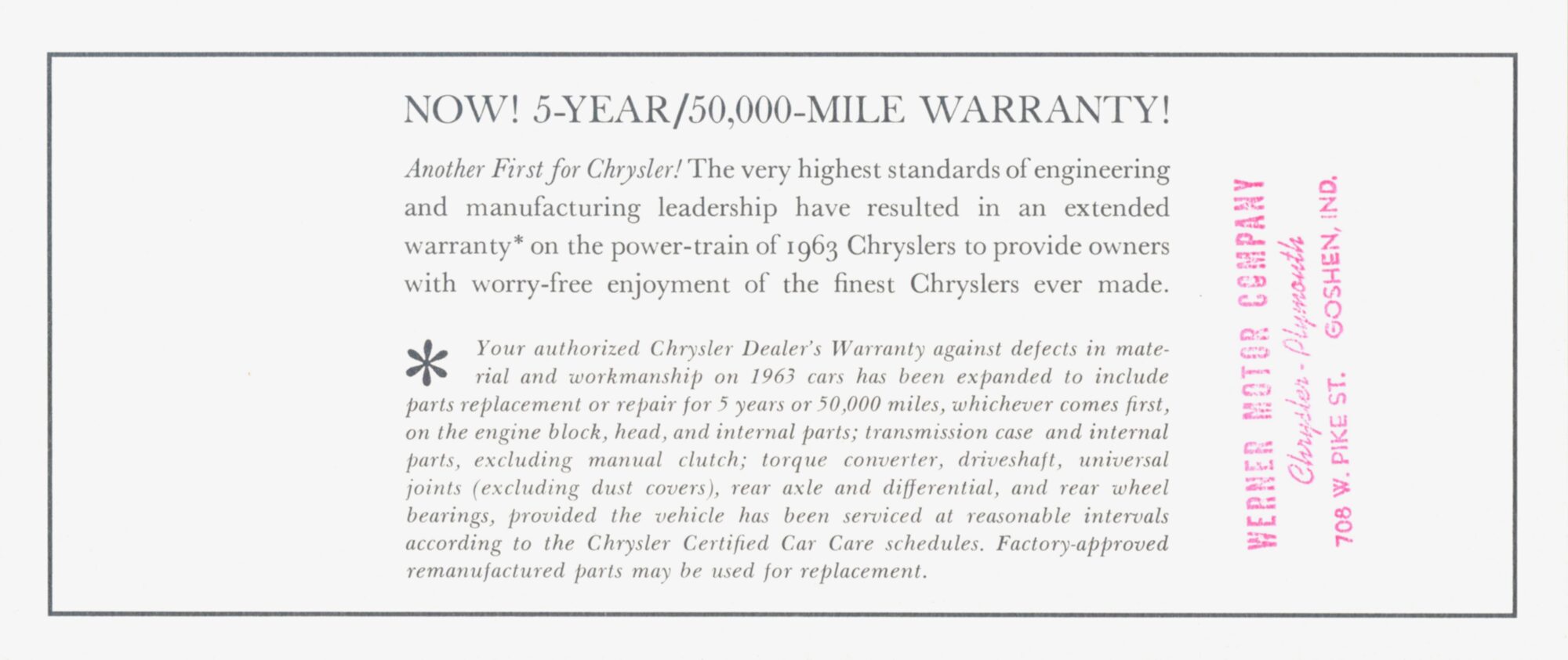
Big news also for 1963 was the new “5/50” warranty on Chrysler vehicles which was an extended warranty now for 5 years, 50,000 miles, whichever came first. This was a major industry news-maker and did much in establishing with buyers that Chrysler really stood behind their products! It was for the powertrain and excluded things like normal wear items like clutches (manual transmissions), rear wheel bearings and universal joints.
1965 ALL-NEW STYLING
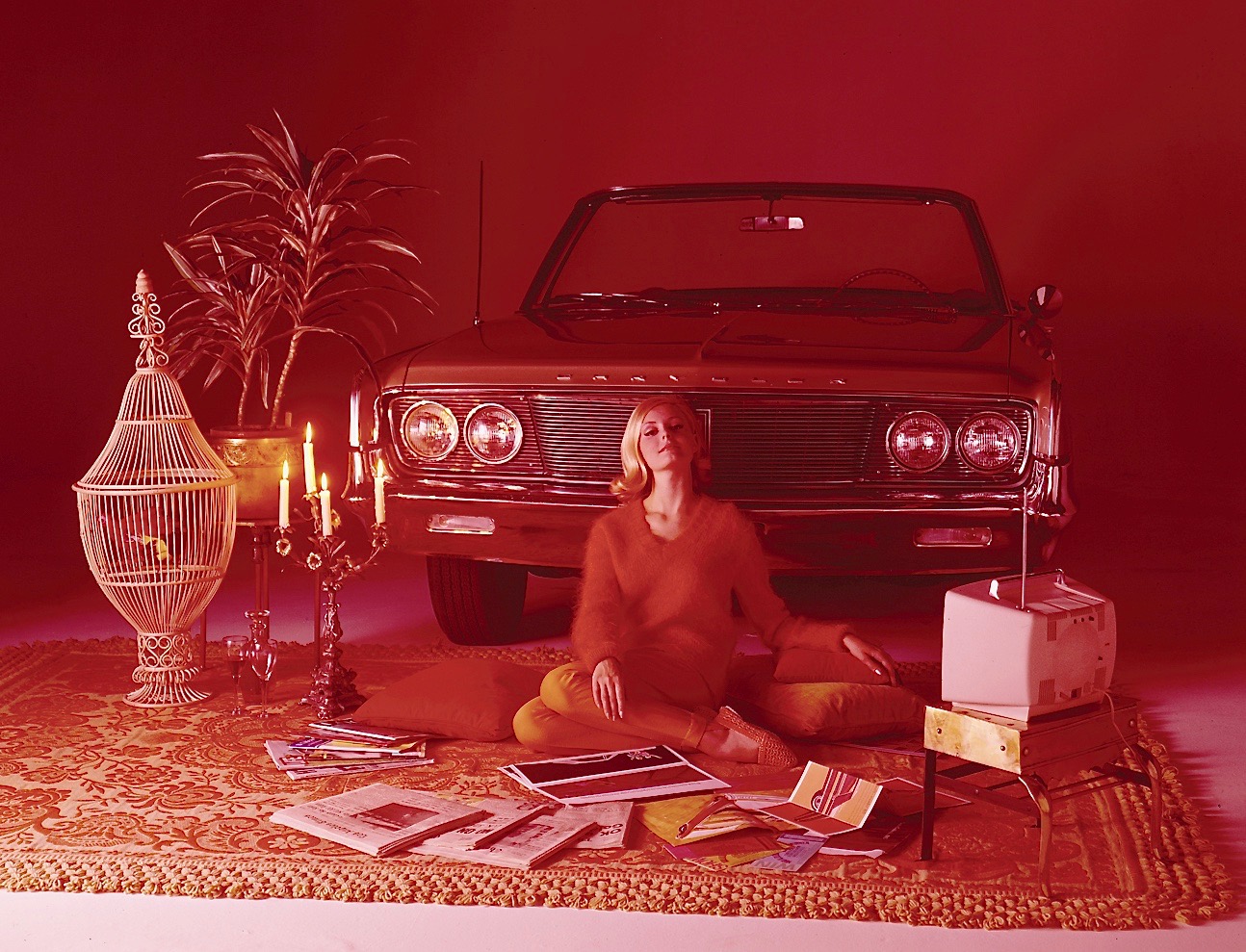
For the 1965 model year, a new Elwood Engel body design came, a $300 million restyling job and it featured slab sides with square corner shape. Sales increased greatly as a result of the new appearance, and the largest models were the 9-passenger station wagons that had a weight listing of some 4,745 pounds… no lightweights!
NEW 440 V8 FOR 1966
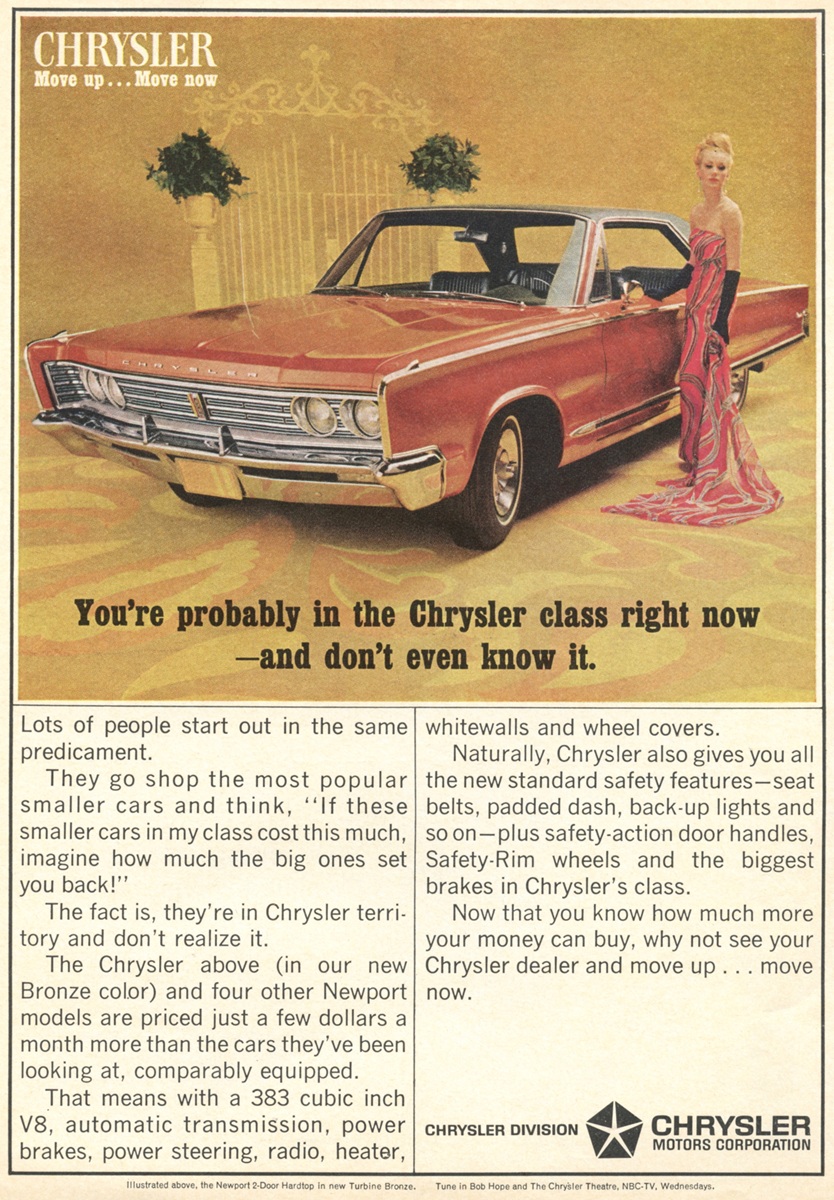
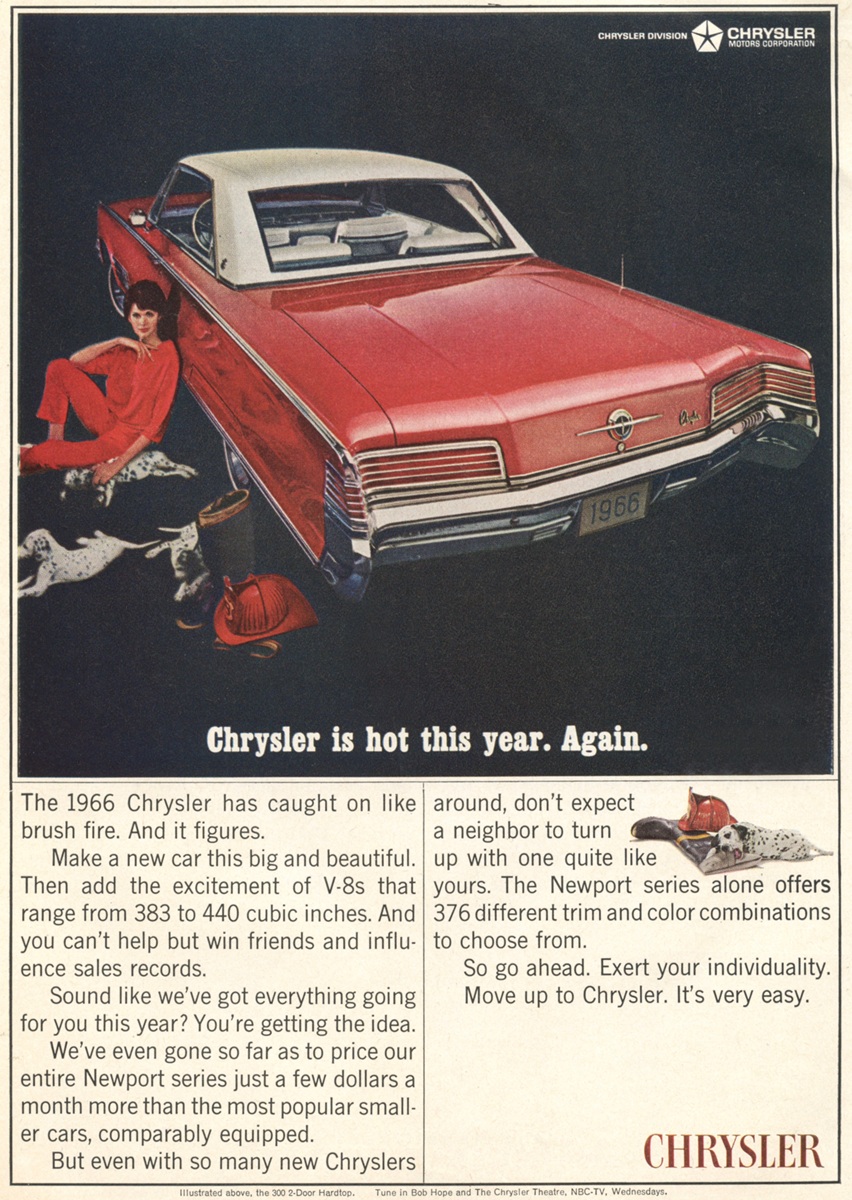
Styling changed very little for 1966; however, the car received a revised grille treatment and restyled rear panel. Newport models had an amazing 376 different trim and color combinations to choose from! The big news under the hood was the availability of the new 440-cid RB engine (overgrowth of the 413) and it turned out 350 horsepower. No radical changes for 1967 model year.
1968 ENHANCED STYLING
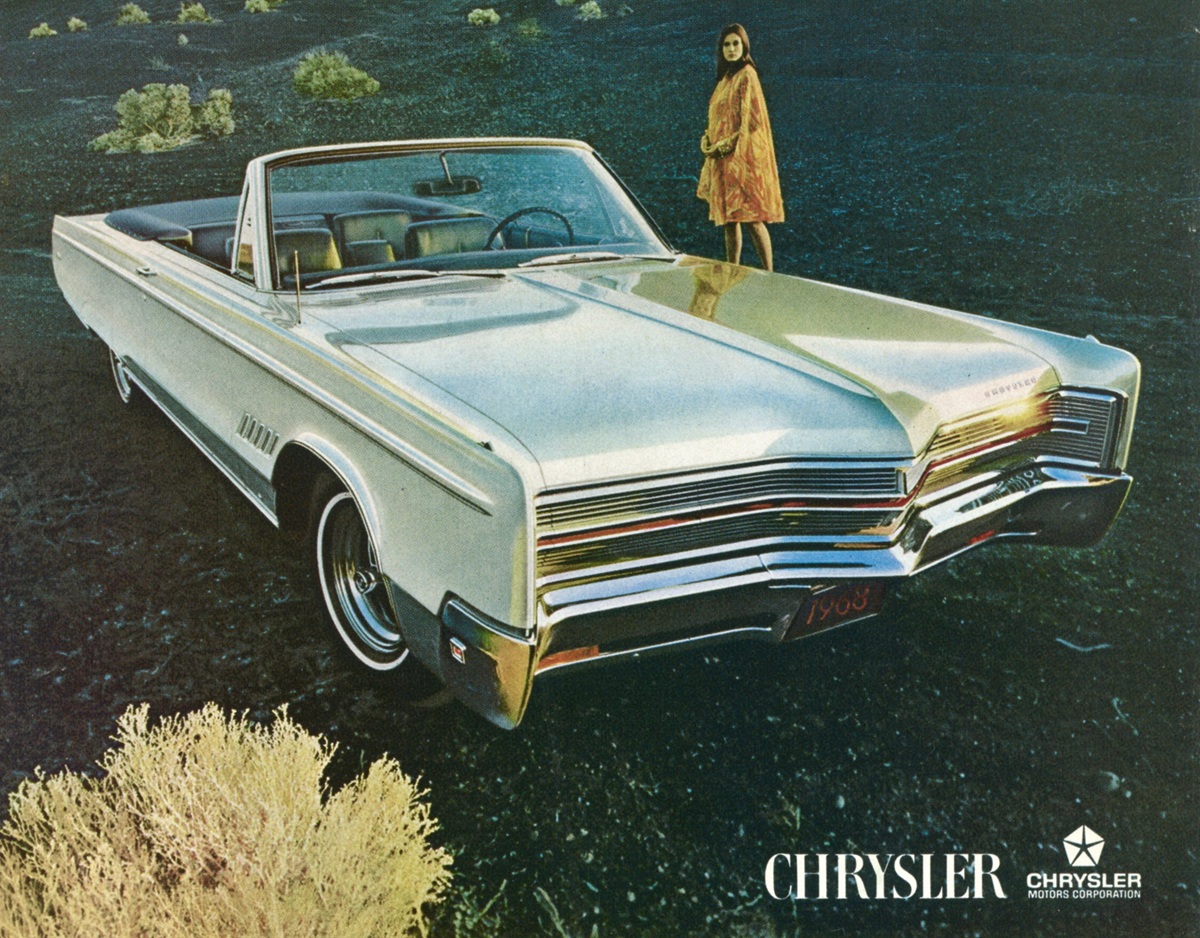
300s featured a special center-pointed hood and grille for ’68, including hideaway headlights and simulated louvers of the front fenders. 440 engines were standard on these models and had to be a high watermark for clean styling in the history of the 300s. A more powerful “TNT” 440 with 375 horsepower was available as optional equipment.
WOOD FLASHBACK
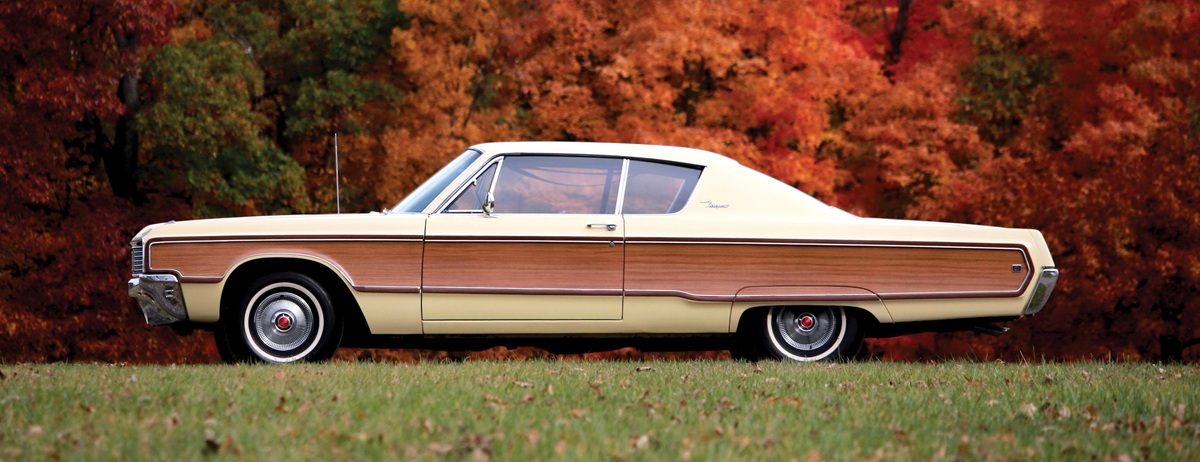
A rather unusual “sportsgrain” simulated-wood bodyside trim version was made available during the Spring of 1968, somewhat a return of the look of the old-time Town & Country Chrysler cars. First shown at the Chicago Auto Show, it received a great deal of press but never sold in big numbers.
1969 CHANGE TO FUSELAGE STYLING
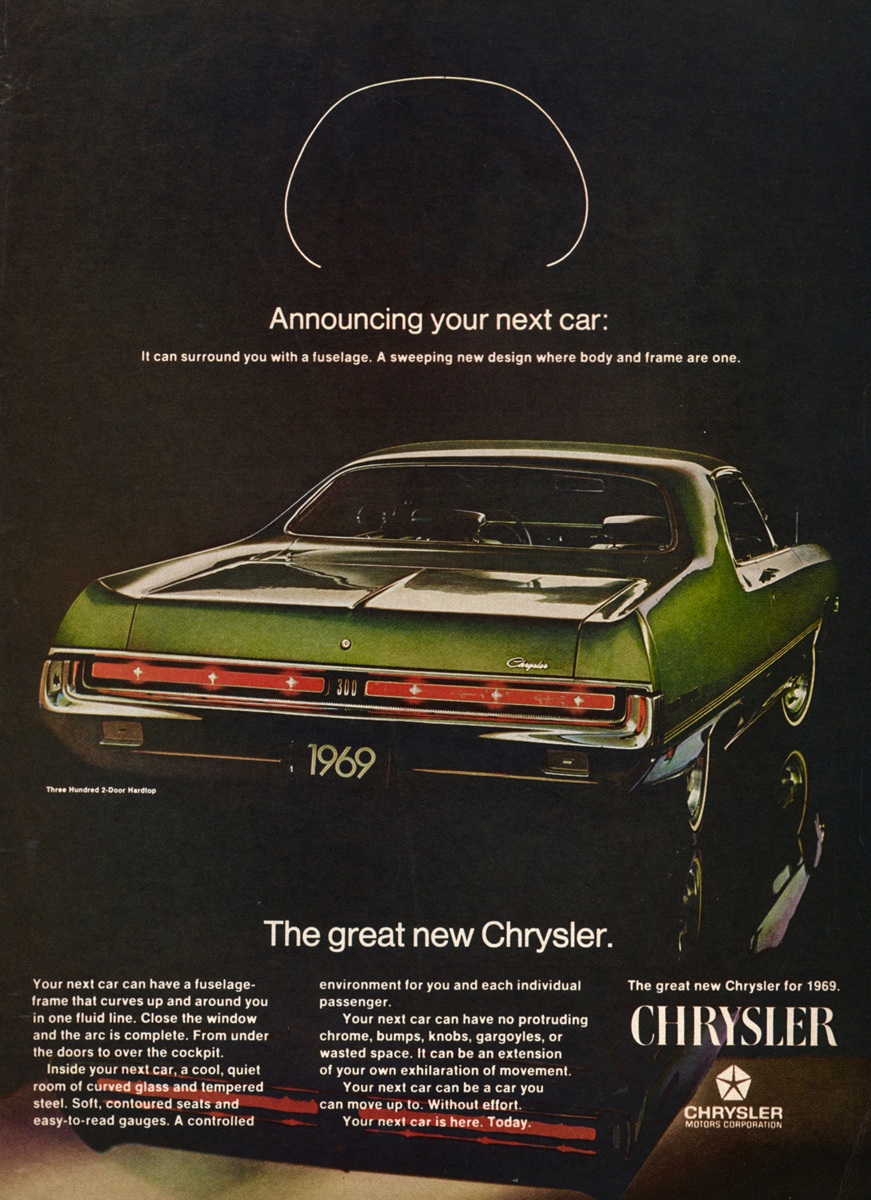
With longer lines and bulging sides, the all-new and radically designed 1969 Chryslers incorporated an appearance unlike anything ever available on a Chrysler showroom. “Airplane fuselage” is what it was promoted as. They had grown 5.5 inches in length and with a wider, roomier interior. Here’s how the advertising described it: “Your next car can have no protruding chrome, bumps, knobs, gargoyles, or wasted space. Your next car is here today.”
CHRYSLER 300H
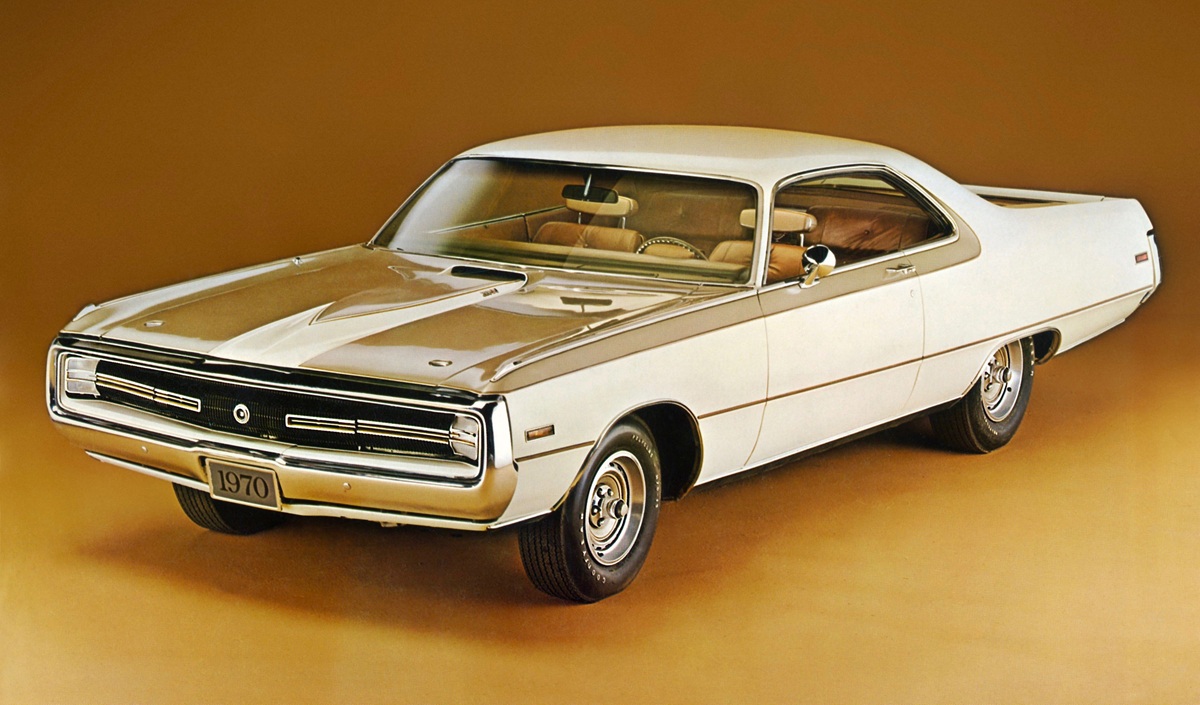
The Chrysler brand teamed up with Hurst to produce the largest vehicle ever to bear the Hurst name, the 1970 Chrysler 300-Hurst. This beast was massive, 224.7 inches in overall length, rolling on its 124-inch wheelbase, power from the “TNT” 440-cid big block engine. The Chrysler 300-H was introduced at the February 1970 Chicago Auto Show. Here’s how it was introduced in the factory press materials postmarked Detroit:
“The new Chrysler 300, reminiscent of the famed Chrysler ‘letter cars’ of the late 1950s and early 1960s, has been announced by Chrysler-Plymouth Division. The new Chrysler — the 300H — combines the flair of the letter car series cars with the distinctive luxury and ride that is inherent in the Chrysler line,” stated Glenn E. White, Chrysler-Plymouth Division general manager. The car had a very distinctive color combination, Spinnaker White with Satin Tan color accents, and Medium Brown pinstripping. The 15 x 6-inch wheels were done in Saturn Iridescent paint, wrapped with H70 – 15 Goodyear Polyglas rubber. All cars were TorqueFlite-equipped and coupled to 3.23 rear gearing.”
Each 300-H was equipped with a special fiberglass hood which incorporated a “power bulge” center section, complete with rear-mounted fresh air intake… not for the engine but rather for the passenger compartment. Up front, the exterior treatment also featured two rotary hood latches were depressed into the fiberglass hood. Interior was crafted with Brown Tone Leather and the arm-chair size front seats were Imperial items. The decklid, also made in fiberglass, was a custom-designed item with recessed air foil integrated with rear fender extensions. (The 1970 Chrysler 300-H is also referred to as the 300-Hurst and it could have been confusing to some as there actually was a previous Chrysler 300-H production letter car from 1962.)
YES: CHRYSLER MADE BOATS
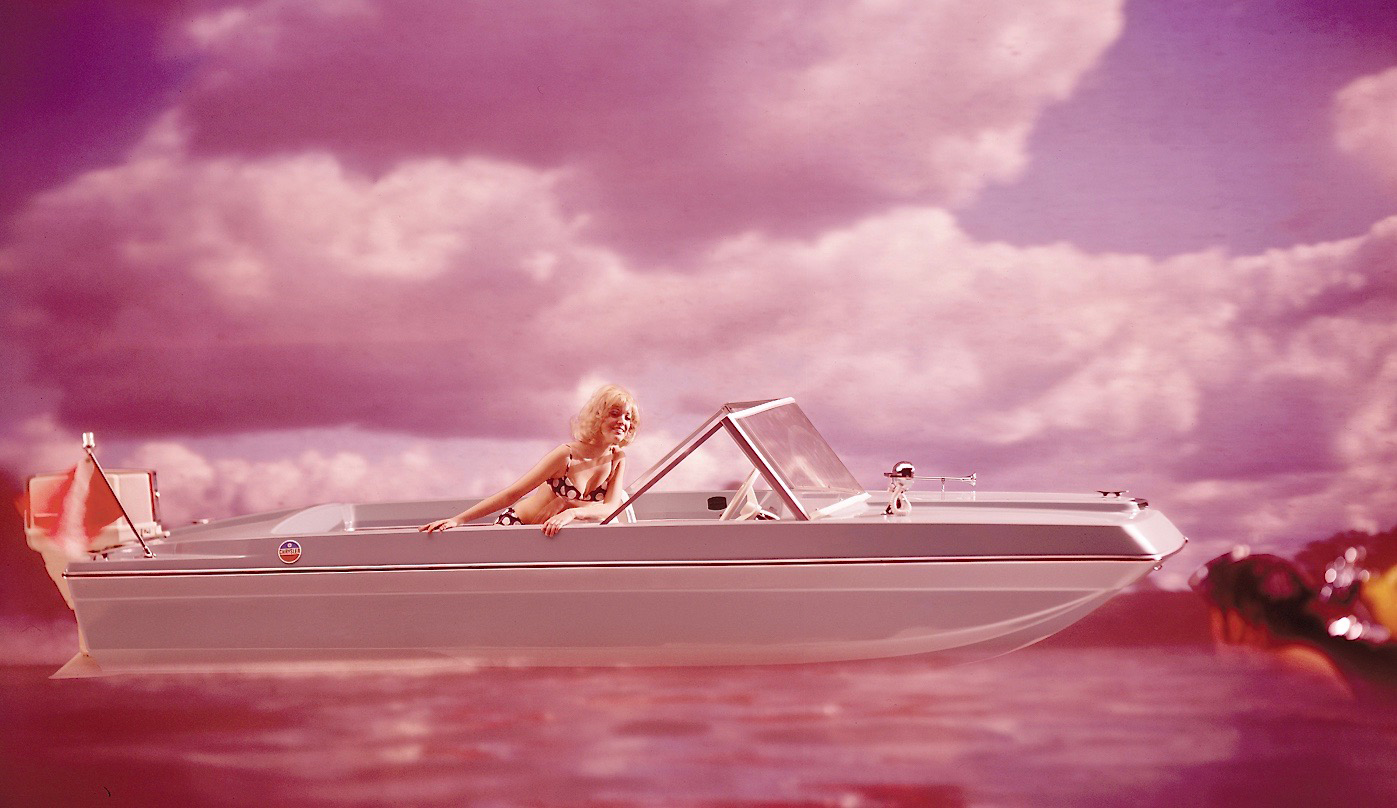
While Chrysler had been making a full line of both inboard and outboard marine engines, it was in 1965 that Chrysler Corporation had purchased the Lonestar Boat Company of Plano, TX, and renamed it the Chrysler Boat Corporation. Chrysler had then combined the company with their Marine Engine Division, as well as their Industrial Products Operations, which was part of their Chrysler Diversified Products Group. In 1966, they added trailers for their boat line, becoming the first company ever to offer a complete package of boat, motor, trailer… but it could be hauled by a Chrysler Corporation vehicle! There were great years of sales; however, by the time 1980 rolled around, times had change for the company’s survival and Chrysler Boat was sold to help save the overall company.
Next will be the final Part 3 of this series, covering everything after the early 1970s until the current model year, which is limited to a single minivan in the product line.
Author: James Maxwell
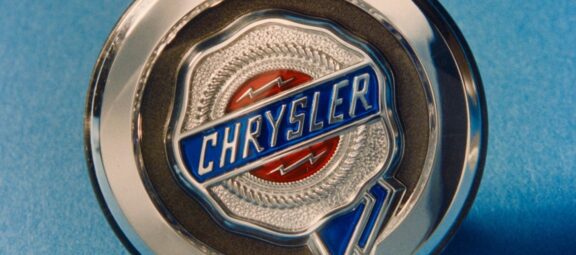
0 Comments